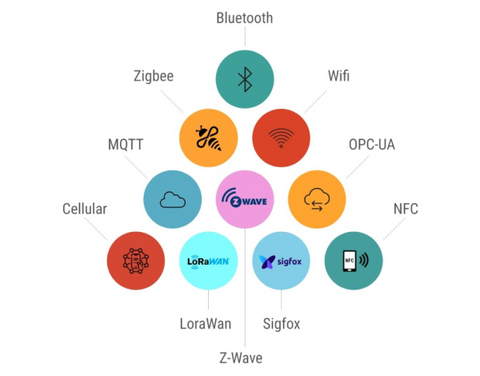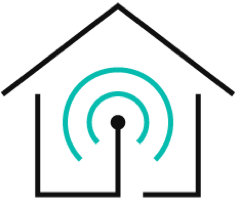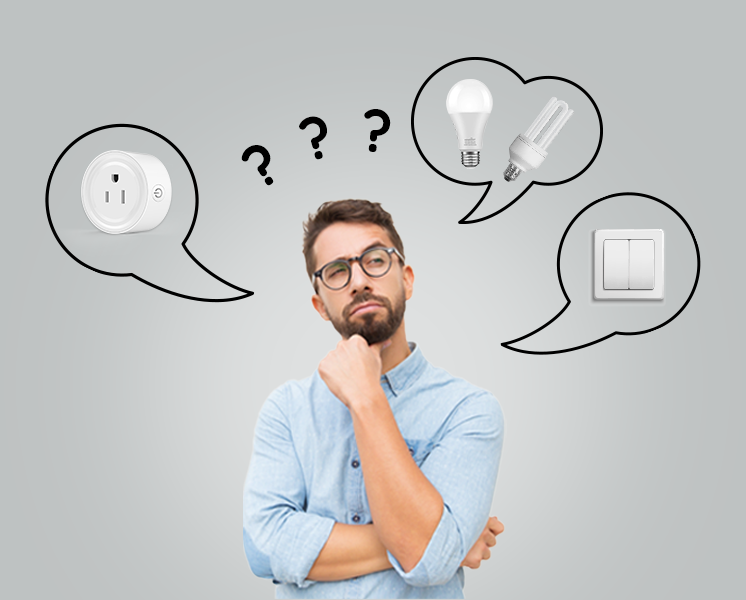In recent years, smart home technology has become increasingly popular, and smart lighting is one of the most common and useful aspects of this trend. Smart light switches offer a range of benefits that make them an essential component of any smart home, from increased convenience and energy efficiency to customization and increased home security.
- Types of Smart Light Switches
- How Smart Light Switches Work
- Benefits of Smart Light Switches
- Types of smart light switches by protocols
- Our Recommendation: Evvr In-Wall Relay Switch
- Smart Lighting Systems for the Home
Types of Smart Light Switches
There are several types of smart light switches available, each with their own unique features and benefits. Some of the most popular types of smart light switches include:
- 2-way smart light switch
- 3-way dimmable smart light switch
- 3-way smart light switch
- 2-gang smart light switch
One of the most popular types of smart light switches is the 2-way smart light switch, which is designed for use in rooms with one light fixture that can be controlled from two different locations. This is ideal for situations where you may want to turn the light on or off from multiple points in the room. For example, you may want to turn off the lights in your living room from both the doorway and from your sofa, without having to walk across the room to do so.
The 3-way dimmable smart light switch is another popular option, particularly for large rooms with multiple light fixtures. These switches allow you to adjust the brightness level of your lights to suit your needs, creating a more comfortable and relaxing environment. For example, you may want to dim the lights in your bedroom before going to sleep to create a more soothing atmosphere, or increase the brightness level in your home office to improve your focus.
The 3-way smart light switch is similar to the 2-way switch, except that it can control a light from three different locations. This is ideal for larger rooms where you may want to control the lighting from multiple points, such as in a kitchen or dining room.
Finally, the 2-gang smart light switch is designed for use in rooms with two light fixtures that can be controlled separately. This allows you to control each light independently, so you can turn one light on and leave the other off, or dim one light while leaving the other at full brightness.

How Smart Light Switches Work
Smart light switches work by connecting to your home's Wi-Fi network and communicating with your smart home assistant or mobile device. This allows you to control your lights using voice commands, mobile apps, or manual switches. Smart light switches also offer additional features such as setting schedules, controlling multiple lights simultaneously, and creating custom scenes for different moods or occasions.

Benefits of Smart Light Switches
Convenience: One of the biggest benefits of smart light switches is the convenience they offer. With smart light switches, you can control your lights from anywhere, even if you're not in the room. This is particularly useful for those who frequently forget to turn off the lights or want to adjust their lighting from bed or the couch. You can even control your lights when you're away from home, which is a great way to create the illusion of someone being home and deter potential burglars.
Energy Efficiency: Another major benefit of smart light switches is energy efficiency. By setting schedules and automatically turning off your lights when not in use, you can reduce energy consumption and lower your utility bills. This is not only good for your wallet, but also for the environment, as it helps to reduce your carbon footprint.
Customization: Smart light switches also offer a high degree of customization. With the ability to create custom scenes for different moods or occasions, such as dimming the lights for a movie night or brightening them for a dinner party, you can create the perfect ambiance for any situation.
Home Security: You can even control your lights when you're away from home, which is a great way to create the illusion of someone being home and deter potential burglars.
Types of smart light switches by protocols
There is a wide range of smart light switches available, which can be differentiated on the basis of the protocol they use while operating. The most prominent protocols used by smart light switches these days are:
- Zigbee
- Z-Wave
- Z-Wave Long Range
- Bluetooth Low Energy (BLE)
- Wi-Fi
- Thread
- HomeKit
- DotDot
- Sidewalk
Zigbee is a wireless open standard protocol created to enable communication between IoT devices. Given that Z-Wave and Zigbee are two of the most widely used heterogeneous network protocols for smart homes, comparisons between them are only inevitable. Additionally, Zigbee and Z-Wave use 128-bit A.E.S. encryption, making them both highly secure. There are some notable changes, though.
HomeKit is a patented smart home framework created by Apple that allows users of iPhones, HomePod smart speakers, and other Apple products to control HomeKit-compatible smart home appliances.
Another standard that is under the C.S.A. is DotDot. It is a layer that enables communication between IoT devices and is made to sit on top of communication standards. So even if one device links to a hub via Zigbee and the other uses Wi-Fi, two devices that support DotDot will be able to interact. These protocols can be effectively used to operate 3-way dimmable light switches, two pole smart light switches, and so on.
Our Recommendation: Evvr In-Wall Relay Switch
The In-Wall Relay Switch by Evvr, is made up of two modules: the Smart Relay and the Smart Switch Sub-Assembly.
Smart Relay uses Zigbee wireless technology when utilizing various loads, such as incandescent lamps, halogen lamps, LED lamps, and fluorescent lamps. It can be put inside the light fixture box because of its compact size. This device is compatible with conventional Zigbee 3.0 gateways or devices for remote control and inter-operation.
When utilized in conjunction with the In-Wall Relay Switch, the Smart Switch Sub-Assembly is an additional feature. Mechanical switch panels can operate with switch directions from the Zigbee network thanks to the Smart Switch Sub-Assembly. For instance, after switching off the lights with a conventional switch panel, you can turn them back on using Zigbee network commands.
A single or series Smart Switch Sub-Assembly can be connected to a single Smart Relay (multiple-point control).
Two circuits of loads can be linked to one Smart Switch Sub-Assembly, but each circuit must use a separate Smart Relay.
Advantage
- Support for both wired and wireless control.
- It is possible to use a single switch to control many products through wire or multiple switches to control one product through the wire, and the cost of wiring is less than it would be using the traditional method.
- The switch module is now smaller when the split type is adopted, allowing it to be installed in different kinds of electrical boxes.
The patented, distinctive design eliminates safety concerns associated with other smart relay switch products, such as electric leakage during installation and light flickering when used with low-wattage light bulbs. It also enables it to work with the most energy-efficient light bulbs. In-Wall Relay Switches don't require a neutral wire, therefore they can be used in any home, including older ones without one. Evvr can offer you a comprehensive smart home solution whether you are an integrator, professional installer, distributor, or DIYer. Get in touch with us today!
Smart Lighting Systems for the Home
Smart lighting systems for the home offer even more control and customization. These systems typically include a hub, which acts as the central control unit, and individual smart bulbs or light fixtures. Some popular smart lighting systems for the home include Philips Hue, LIFX, and Sylvania Smart+.
Conclusion
In spite of all the doubts of adopting a new system, smart light switches are indeed about to become the new norm and hence need to be normalized as soon as possible. Evvr is doing an excellent job in developing smart home equipment and the products are also pocket-friendly. Hence proper exploration of such technology can ultimately lead you to a better home experience and can change the way we view convenience in general.















